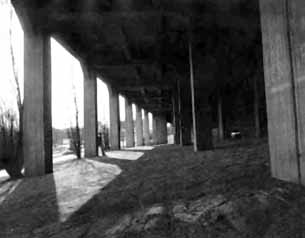Third Street/Kellogg Boulevard
East of the Mississippi River, From Mounds Boulevard to John Ireland Boulevard
Third Street experienced its zenith in the 1880s, when St. Paul’s onetime main street served the city’s “front door” at the old Lower Landing, which later became the first St. Paul Union Depot. Newspapers even dubbed it the “Gay White Way” in 1886, when civic leaders sponsored colorful arches built out of gas lamps from Wabasha Street to Sibley Street.(1) Wholesalers, architects, banks, and theaters proudly declared their addresses on third—some of these, such as the West Publishing Company, continue to exist today.
Even during its heyday in the late 19th century, Third was a cultural hub for transient laborers; it was the principle address of warehouses, and the street thread through railroad yards and industries to the east. These urban uses stimulated accompanying headaches for civic leaders, as brothels, saloons, employment offices, cheap hotels, pawnshops, and criminal activity eventually forced “respectable” uses to relocate on streets to the north. Indigent labor provided financial support for St. Paul’s grand architecture and wealthy families. However, the government and upper classes merely tolerated these men, who numbered in the thousands when they returned from seasonal work.
| Queer behavior and activity undeniably accompanied the “unfavorable” hordes of largely unmarried transient men. Newspapers and the police paid hardly any attention to this activity at all, likely because industrial powers needed the labor.
|
Underside of Kellogg Boulevard a few years after its construction. Note the man leaning at the base of the second column left-to-right. |
(1)“Kellogg Boulevard: The Story of Third Street.” Ramsey County History Magazine, Fall 1969: Vol. 6, no. 2. Pages 14-15.
Part of Minneapolis/St. Paul, MN: 100 Queer Places in Minnesota History, (1860-1969), (1969-2010)
